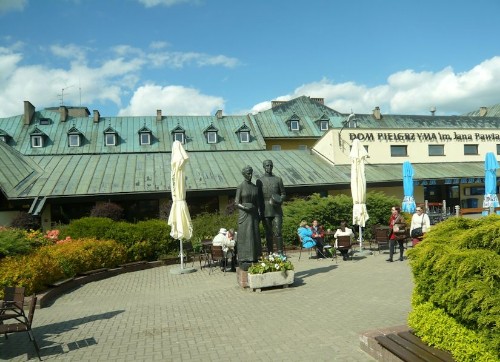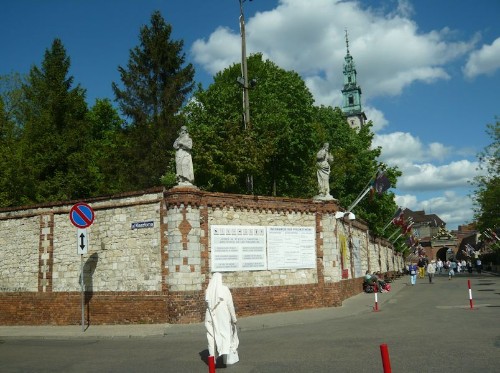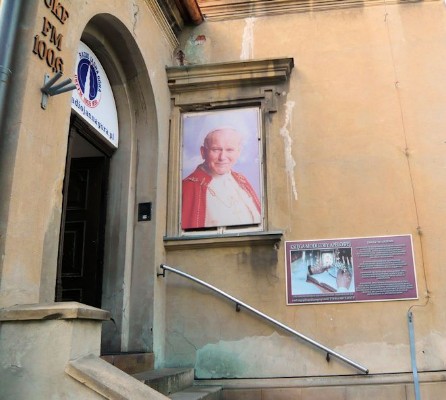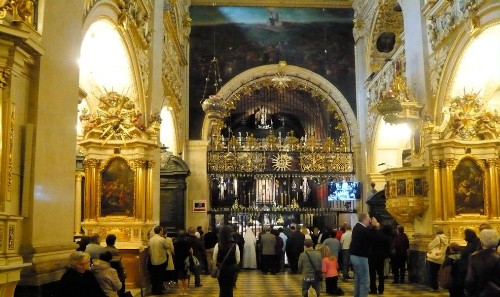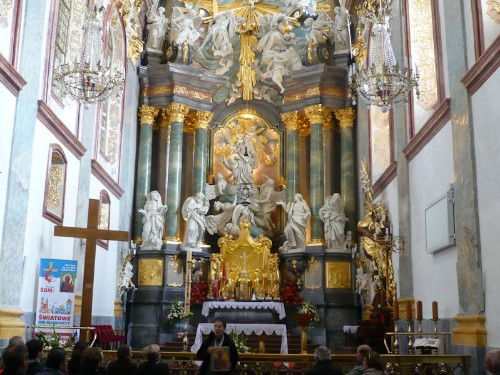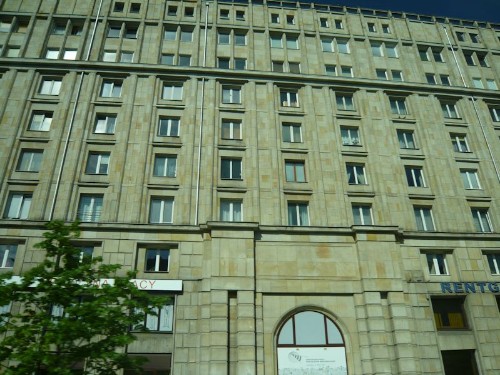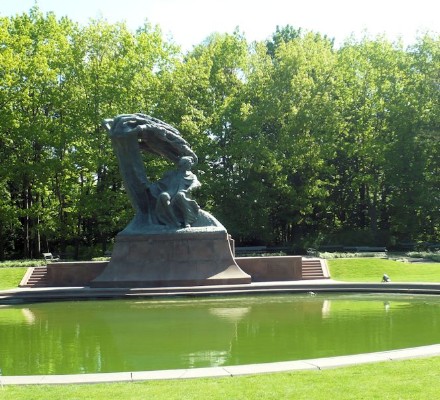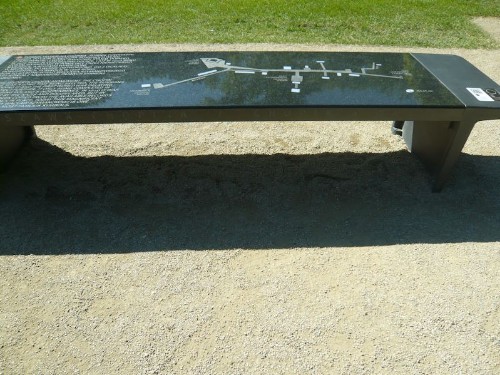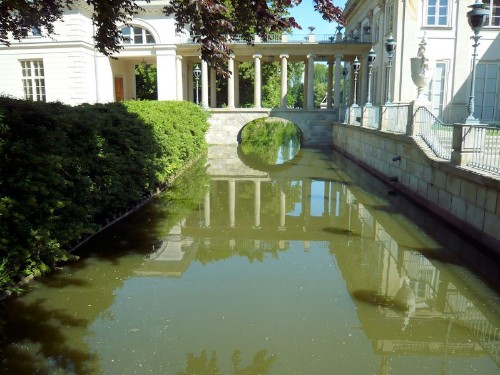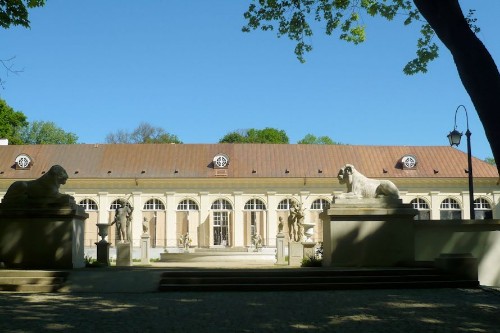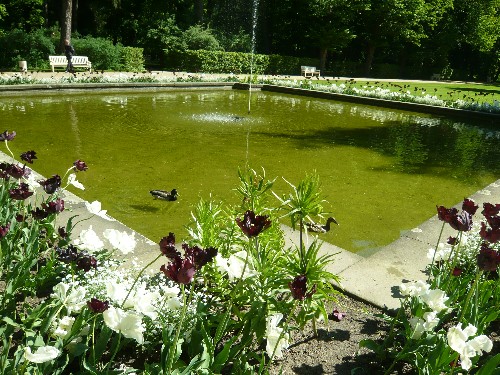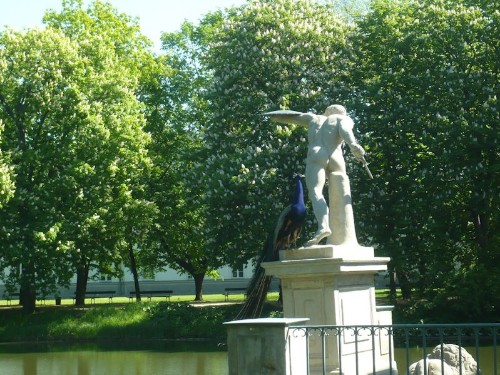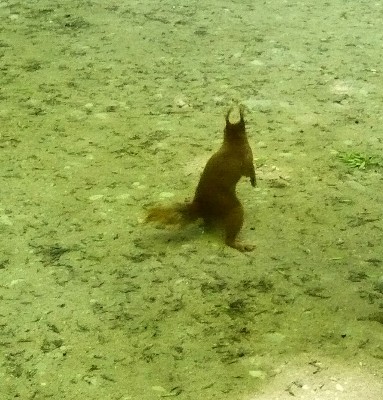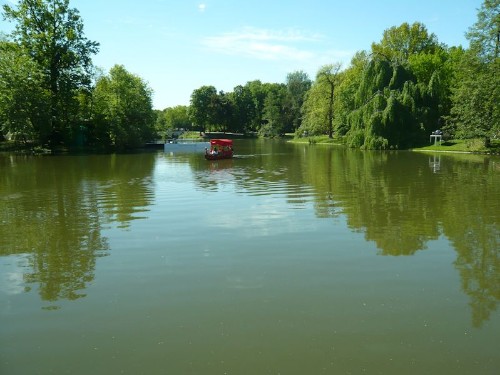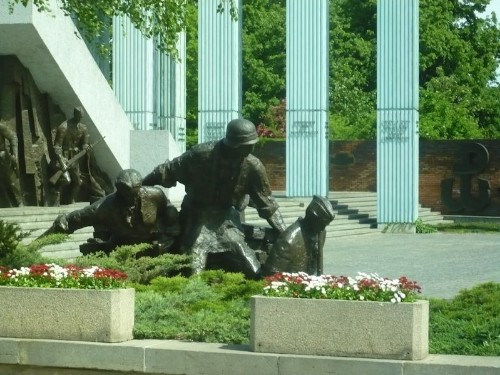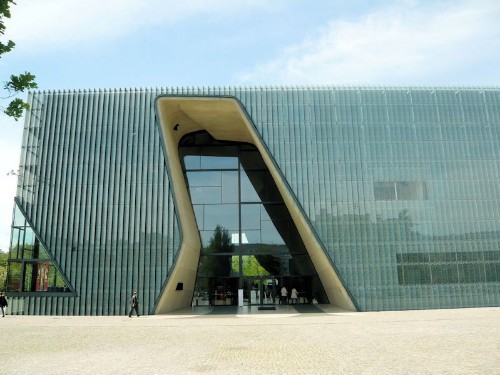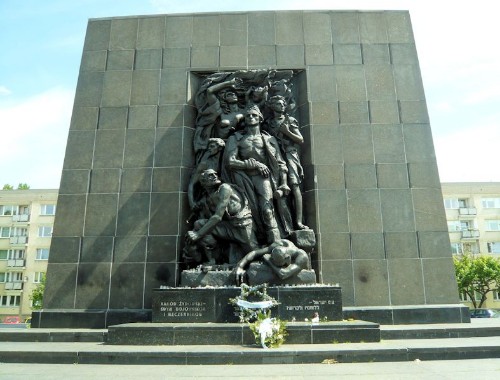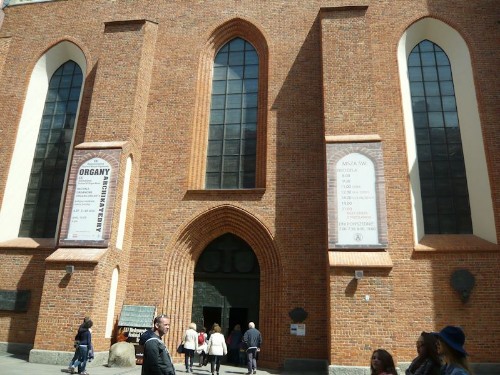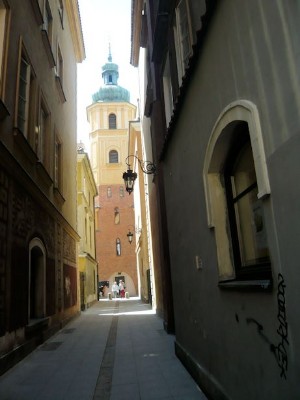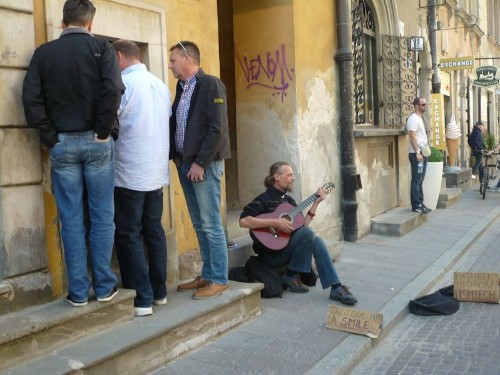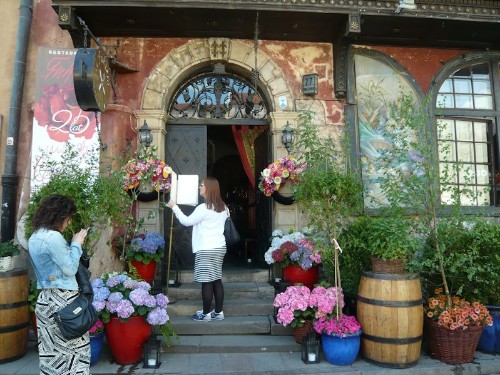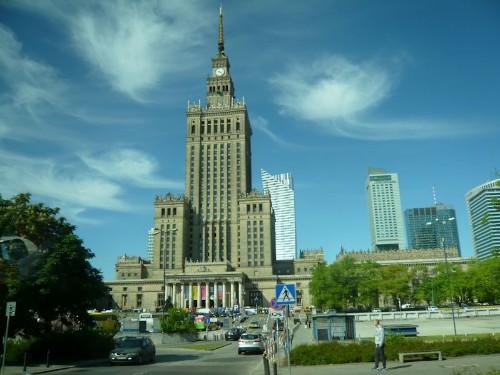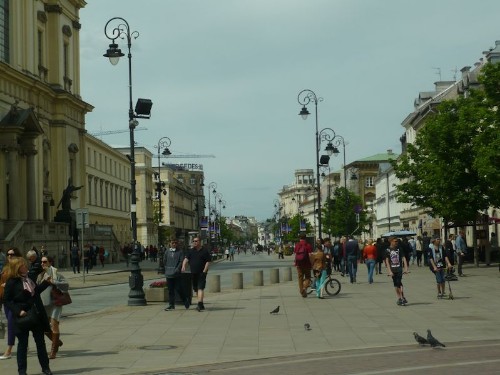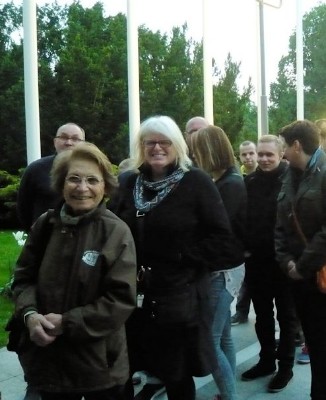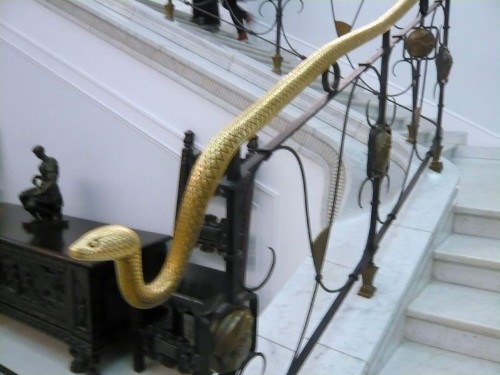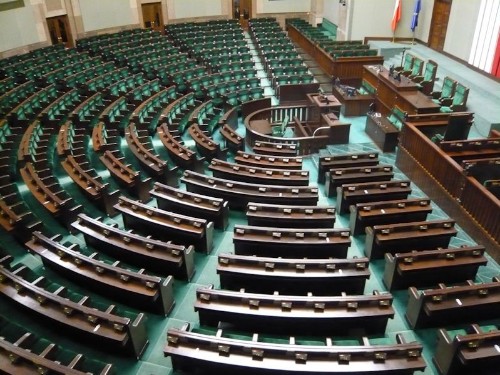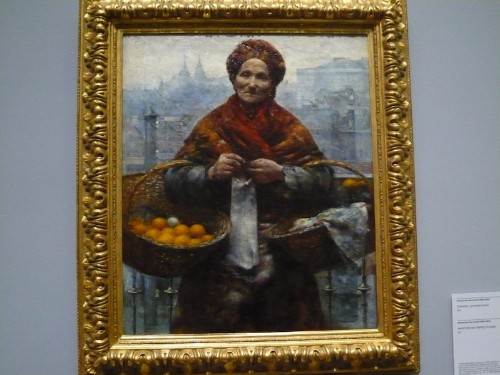Poland: Part two
Warsaw
By: Zeren Earls - Jul 01, 2015
On the way to Warsaw, stopping in Czestochowa to visit the Jasna Gora Monastery replenished my Auschwitz-drained soul with spiritual and physical beauty. We arrived along with a community of devout Poles of all ages and entered the monastery grounds through its arched gateway. Young boys and girls in white formal wear, the latter with flower wreaths on their heads, lined up in twos to enter the building. A picture of Pope John Paul II, Poland's native son, greeted us at the entrance. An important pilgrimage destination for the Poles, the 14th-century hilltop shrine Jasna Gora, meaning "Luminous Mountain," houses the Black Madonna , a Byzantine painting of the Virgin Mary which has attracted pilgrims for its miraculous powers, including stopping a Swedish siege of the Building in the 17th century. Around the icon was a crowd of people, some on their knees praying.
It was dusk when we arrived in Warsaw, Poland's capital and largest city, with a population of 1,700,000. The impressive modern skyline was the sign of a vibrant city, although 85% of it had been destroyed during World War II. The Polonia palace Hotel, our home for two nights, was built in 1913, but had a contemporary interior with spacious rooms. Dinner at a nearby restaurant, called Smaki Warszawy, made up for the day's long journey from Krakow. We enjoyed a salad of greens with sunflower seeds, breaded chicken breast stuffed with ham, and cherry tart for dessert.
Lazienki means "baths", referring to the decision by Poland's last King, Stanislaw August, to convert an existing bath-house into his summer residence. The Summer Palace is a mixture of classicism and baroque on an island within the huge Lazienki Park. Today the Palace is a museum featuring paintings from the King's collection. The Old Orangerie, originally housing exotic trees, now exhibits the royal collection of sculpture. A delightful walk through the Royal Garden took us by ducks in ponds edged by tulip beds, chestnut trees in bloom with pink and white flowers, and peacocks among the garden's Romanesque statues, while red squirrels approached people, hoping to be fed.
Another symbolic war-related place in the center of Warsaw is the Polin Museum of the History of Polish Jews. Warsaw had the largest Jewish community in the world before WW II. The museum is located in the district formerly inhabited by Jews and turned into a sealed ghetto by the Nazis. The building is a landmark of modern Warsaw, while paying homage to its rich Jewish past. The main hall cuts the building in half, symbolizing a rupture in Jewish history, caused by the Holocaust. Glass panels on the building's facade are covered in Hebrew letters forming the word Polin, meaning both "Poland" and "Rest here". opposite the Museum is the Monument to the Ghetto Heroes.
The Museum of Warsaw at the Old Town Market Square has a collection of 300,000 objects linked to the capital's history, which have been recovered over the past 70 years. They are housed in eleven tenement buildings, currently veiled behind architectural renderings of the facades, indicating that reconstruction is in process. Another building of note is the Cathedral basilica of the Martyrdom of St. John the Baptist, which has witnessed many royal weddings, coronations, and funerals. Also in the Old Market Square is the guardian and symbol of the city — a statue of the Warsaw Mermaid, wielding a sword in her hand. The entire Old town is now listed as a UNESCO World Heritage site.
Taking advantage of our free afternoon, I continued meandering through the narrow streets of the Old Town as well as the wide avenues of the city, all the way back to the Polonia Palace hotel. Having had a big breakfast, I settled for an ice cream cone for lunch. Buildings of note on my way were the university, where during World War II the Nazi authorities made academic activity punishable by death; the Polish Academy of Sciences, located in the Staszic Palace, in front of which rises a statue of Copernicus, the Polish astronomer who formulated the theory of revolving heavenly spheres; and , close to our hotel, the Palace of Culture and Science, which can be seen from every corner of the city. Erected as a "gift from the Soviet people," the 44-story tower has over 3000 thousand rooms housing everything from theaters, libraries, and museums to several basketball courts. An unusual encounter along the way was a very tall palm tree at a busy intersection of many roads — homage to Polish Jews living in Israel.
Nearby the Parliament building is a sculpture of Ronald Reagan behind a podium; he is a figure respected and honored for his tough stance on communism. We joined a long line of Poles waiting to clear security and enter the parliament; once through, we met up with the same local guide who had taken us around in the morning. She led us up an elegant stairway, with an ornate railing supporting a serpent through the stairwell. As we walked through the halls, we stopped to see spaces such as the Senate chamber and the President's room. Engraved on the marble wall are the names of all Members of Parliament who perished during WW II. Poland's national emblem — a white eagle with a golden crown on a red background — is prominently displayed in the Senate chamber, along with the red-and-white Polish flag and the European Union flag. Poland's Parliament was the second, after that of the United Kingdom, to be founded in Europe.
The National Museum is a modern building within walking distance of the Parliament. Lines here, consisting of many young people, were equally long. The museum has a large collection of paintings, sculptures, drawings, photographs, and applied arts representing all periods, from antiquity to modern times. Many of the works are masterpieces of Polish and foreign art; the longest line was for the Gallery of Old Masters. Bypassing the most crowded galleries, we looked at two paintings — "The Battle of Grunwald" by Jan Matejko and "A Jewish Woman Selling Oranges" by Aleksander Gierymski. The former is a wall-size oil painting depicting a clash between the Polish-Lithuanian army and the Teutonic Knights in 1410. The latter, painted in 1881, is one of the works stolen during WW II, many of which have been recovered and brought back to the Gallery of 19th-century art.
Calling it a long day, we walked back to the hotel to prepare for our departure for Vilnius, Lithuania the next morning. Poland is a vibrant, modern country, rich in culture and history; it definitely deserves a long visit.



